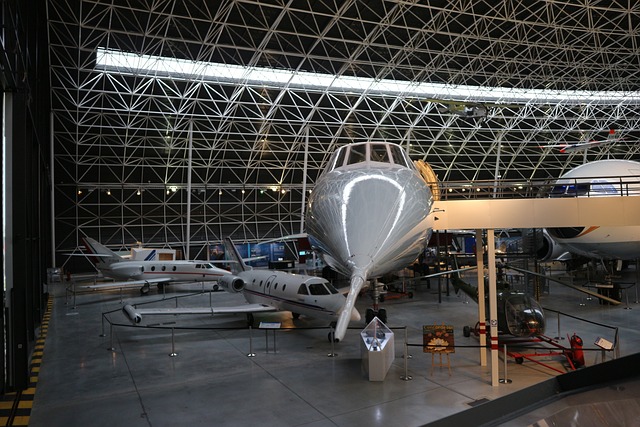Tech
China Developing Jet to Travel Anywhere in Two Hours

China is making remarkable strides in aviation technology with its ambitious plan to develop a hypersonic passenger jet, capable of flying at speeds that could revolutionize air travel.
The cutting-edge aircraft, dubbed the “Nanqiang No 1,” aims to reach speeds up to six times faster than the legendary Concorde, potentially transporting passengers to any destination on the globe in under two hours.
This futuristic project has already undergone rigorous testing at a state-of-the-art laboratory in Fujian Province. Reports from China indicate that the unmanned prototype is expected to weigh just 500 kilograms, showcasing a sleek and lightweight design optimized for speed. The jet is projected to cruise at an astonishing Mach 6, or six times the speed of sound, which would set new standards for commercial flight.
Air India Initiates Construction of MRO Facility at Bengaluru Airport
The key to achieving such mind-blowing speeds lies in a sophisticated engine design. The “Nanqiang No 1” will utilize a combination of turbofan, rocket, and ramjet engines, pushing the boundaries of what current aviation technology can handle. Early renderings of the aircraft reveal a “MUTTER” engine configuration, which includes two air-breathing ramjet engines, a small rocket engine, and two turbine engines. china 6th generation fighter While there were initial doubts about the feasibility of this engine setup, computer modeling and early lab tests have demonstrated the MUTTER system’s ability to surpass Mach 6.
Though several nations are exploring supersonic and hypersonic flight technology, China’s pursuit of a passenger jet capable of reaching hypersonic speeds puts it at the forefront of this race. Supersonic jets, which travel faster than the speed of sound (Mach 1), are being explored by various aerospace companies worldwide, but China’s vision to push beyond supersonic into the hypersonic realm represents a bold leap into the future of air travel.
Air India Express Aircraft Engine Part Falls Outside Delhi Airport; DGCA Orders Probe
With the potential to redefine how people traverse the globe, China’s hypersonic passenger jet could make long-haul flights obsolete, allowing travelers to reach far-flung destinations in a matter of hours. The country hopes to see the technology realized and operational for tourist use within the next decade, marking a new chapter in aviation history.

Tech
Scientists Create Drone with Fiber Optic “Nervous System” for Smarter Flight

Technology is advancing rapidly, with scientists constantly pushing boundaries. Now, researchers from Southampton have developed a unique drone equipped with its own “nervous system.”
This breakthrough allows the drone to process information and respond to its surroundings more like a living creature, making it faster and more adaptable than ever before.
China Set to Debut New J-35A Stealth Fighter at Zhuhai Airshow
Scientists at the University of Southampton have pioneered a groundbreaking development in drone technology by equipping a drone with its very own “nervous system.” This innovative system, made of fiber optics, enables the drone to function with greater autonomy and efficiency.
Unlike traditional drones, this technology allows the drone to operate for longer periods without needing frequent stops for manual inspections, drastically improving its operational capabilities.
Comparison of the Indian built Tejas MK1A vs South korean FA 50
Developed by Dr. Chris Holmes and Dr. Martynas Beresna from Southampton’s Optoelectronics Research Centre, the drone’s “nervous system” works by using optical fibers to monitor its condition in real-time.
These fibers detect stress and potential faults, sending data back to the ground team, allowing them to spot issues without interrupting the drone’s flight. The system uses a process called optical speckle, which projects images to assess the drone’s status, all while being supported by AI algorithms that interpret these signals for the ground crew.
Initially designed to deliver life-saving equipment like defibrillators in emergencies, this technology has shown promise in enhancing the drone’s longevity and reducing the need for extensive ground crew involvement.
This is especially crucial as the drone industry is projected to contribute up to £45 billion to the global economy by 2030, particularly in sectors like logistics and transportation. The University of Southampton’s team believes that the new system will revolutionize drone operations, making them more reliable, safer, and cost-effective for commercial use.
The technology, which has already been successfully tested on a drone developed by university undergraduates, is set to be commercialized by 2025, with the university’s Future Worlds acceleration programme providing vital support for its development.
-

 Aviation2 months ago
Aviation2 months agoMicrosoft Flight Simulator Raises $3 Million to Bring Back the An-225 Mriya
-

 Airlines2 months ago
Airlines2 months agoQantas Engineers Stage Walkout Over Cost of Living Concerns
-

 Airlines2 months ago
Airlines2 months agoQatar Citizens Can Travel to the United States Without a Visa
-

 Aviation2 months ago
Aviation2 months agoQatar Airways bans these new Electronic Devices on plane
-

 Airlines2 months ago
Airlines2 months agoJapan Airlines Rolls Out Free Domestic Flights to International Passengers
-

 Defence2 months ago
Defence2 months agoWhich Country Has the Largest Fleet of Fighter Aircraft?
-

 Airport2 months ago
Airport2 months agoWestern Sydney Airport Welcomes Its First Plane After 6 Years of construction
-

 Aviation2 months ago
Aviation2 months agoDid you know ? Once Boeing 747 carried 1088 passenger in 1991








